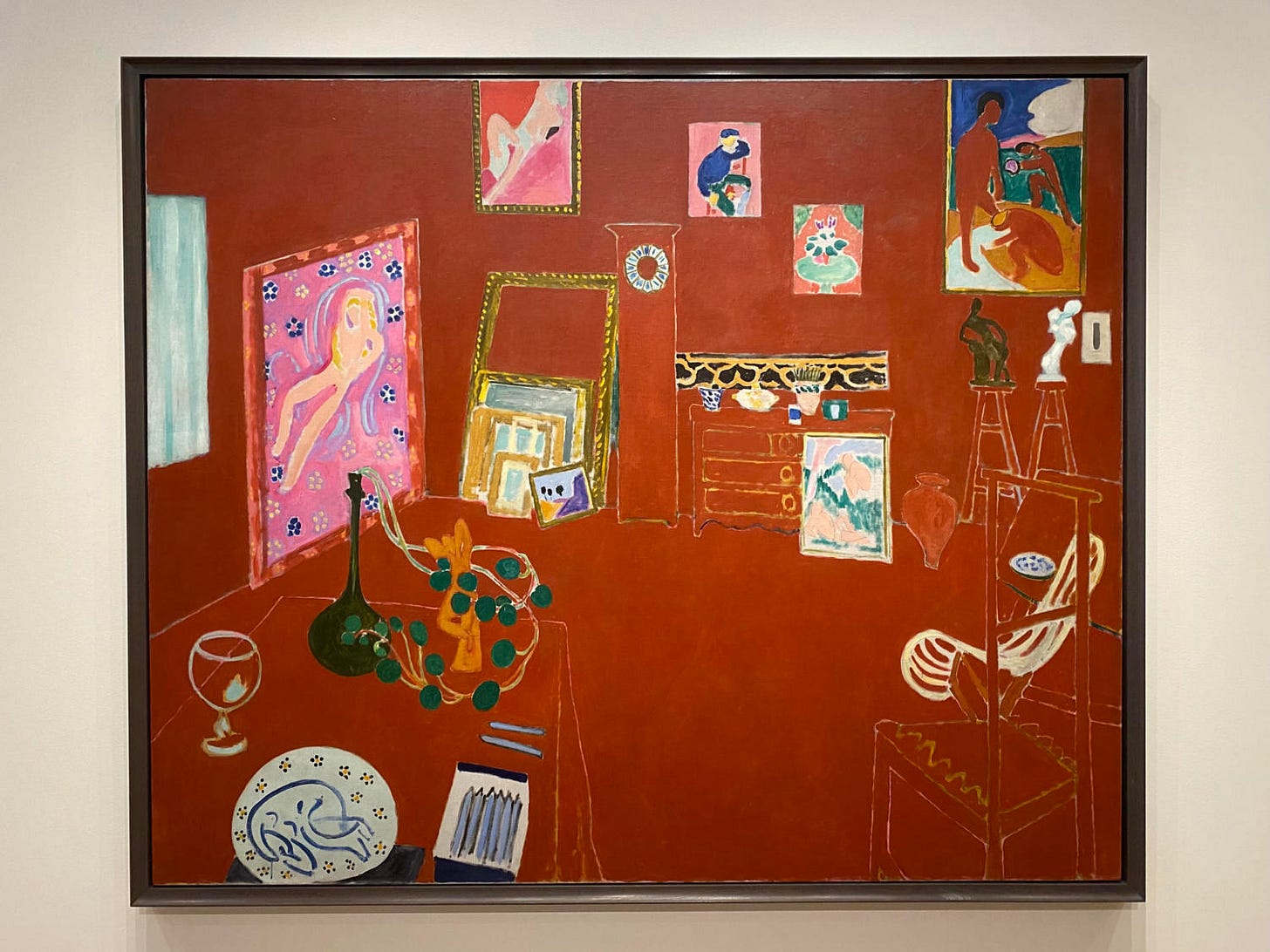Rediscovering Matisse: The Revolutionary Vision of L'Atelier Rouge at the Fondation Louis Vuitton
An In-Depth Exploration of Matisse's Masterpiece and Its Enduring Impact on Modern Art
The exhibition "Matisse, L'Atelier Rouge" at the Fondation Louis Vuitton is a remarkable homage to Henri Matisse's groundbreaking work from the 20th century. Presented in collaboration with the Museum of Modern Art in New York and the SMK – Statens Museum for Kunst in Copenhagen, this exhibition explores the genesis, evolution, and legacy of Matisse's L'Atelier Rouge (1911). Despite being overshadowed in Matisse's body of work, this masterpiece now takes centre stage, allowing for a thorough exploration of its historical significance and aesthetic impact.
Upon entering the exhibition, one is immediately drawn to the transformative curatorial approach. The exhibition's arrangement is a captivating invitation to peel back the layers of meaning, context, and artistic choices that led to this groundbreaking work. L'Atelier Rouge, with its radical use of colour and abstraction, is positioned as a pivotal moment in Matisse's career and a guiding light for future generations of artists.
L'Atelier Rouge occupies a central and symbolic position at the heart of the exhibition. Although a mystery,Matisse's decision to saturate the canvas with a bold Venetian red, covering nearly two-thirds of the surface, was revolutionary. This chromatic choice challenges traditional notions of space and perspective and imbues the painting with mystery and psychological depth. The red engulfs the viewer, creating an immersive environment that blurs the boundaries between the depicted studio and the surrounding space, making the audience feel involved and connected.
This exhibition is particularly compelling because it focuses on the painting's journey from obscurity to recognition. Initially dismissed by its intended buyer, the Russian collector Sergei Shchukin, L'Atelier Rouge languished in relative obscurity for over thirty years. It wasn't until the painting reached New York's MoMA in 1949 that it began to receive the attention it deserved. Particularly, it addresses the critical reception of L'Atelier Rouge over time. The painting's initial failure to attract buyers is juxtaposed with its later influence on Abstract Expressionists. This narrative underscores the idea that true innovation is often ahead of time, requiring years of reassessment before its significance is fully understood. It highlights the shifts in perception that led to the painting's eventual canonization as a masterpiece, inspiring and intriguing the audience.
Surrounding works—six paintings the painting are three sculptures, and one ceramic—provide crucial context for L'Atelier Rouge. These pieces, all of which played a role in the composition of the studio scene, are presented as fragments of Matisse's artistic world, each contributing to the overall narrative of his creative process. The exhibition's design allows visitors to appreciate the interconnectedness of Matisse's practice.
In conclusion, the Fondation Louis Vuitton's "Matisse, L'Atelier Rouge" exhibition triumphs in art historical scholarship and curatorial design. It reintroduces L'Atelier Rouge as a seminal work in Matisse's career and recontextualizes its importance in the broader history of modern art. The exhibition succeeds in transforming what was once an overlooked painting into a central piece of the modernist canon, proving that Matisse's radical vision continues to resonate in profound ways.




